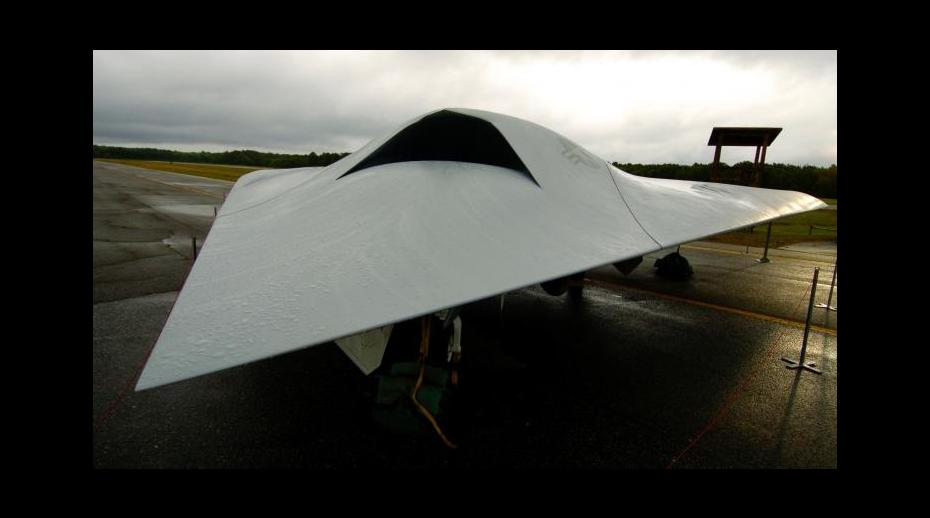
As the First Meeting of the Group of Governmental Experts on Lethal Autonomous Weapon Systems (LAWS) begins at the United Nations in Geneva this week, SIPRI launches a new report, Mapping the Development of Autonomy in Weapon Systems, which aims to shed light on the current developments in autonomy in weapon systems and thereby provide important insights for informed international discussions.
Autonomy in weapon systems is already a reality, but the human control element is still necessary
The governance of LAWS has emerged in recent years as a major area of concern for the arms control community. The question of whether LAWS should be regulated is the focus of an intergovernmental expert discussion within the framework of the 1980 UN Convention on Certain Conventional Weapons (CCW).
The report, which details the findings of a one-year mapping study undertaken by SIPRI, reveals that ‘autonomy’ has many definitions and interpretations, and is already a reality of weapon systems development. Autonomy is currently used to support various capabilities in weapon systems, including mobility, targeting and intelligence.
A key area examined by the study is the technology that enables weapon systems to acquire targets autonomously. This has existed since the 1970s, but current targeting technology still has limited perceptual and decision-making intelligence. The report explains that performance rapidly declines as operating environments become more cluttered and weather conditions deteriorate.
‘Autonomous systems need to be more adaptive to operate safely and reliably in complex conflict environments,’ says Dr Vincent Boulanin, SIPRI’s expert on emerging military technologies and the main author of the report. ‘Given the limitations of current technology, humans have to play the crucial role of receiver of tactical information and arbiter of targeting decisions on the battlefield,’ adds Maaike Verbruggen, a PhD candidate at the Vrije Universiteit Brussel and co-author of the report.
Autonomy changes, but does not replace, the role of humans on the battlefield
Limiting the debate on LAWS to the case of fully autonomous systems is somewhat problematic as it does not reflect the reality of how the military sees the future of autonomy in weapon systems. It also makes it more difficult to tackle the spectrum of challenges raised by the advance of autonomy in the short term.
‘Autonomy is bound to transform the way humans interact with weapons, but will never completely replace them’, argues Boulanin. ‘The focus of the UN discussion should therefore be on the impact of autonomy on human control.’ According to Boulanin, ‘The core questions of the ethical and legal debate should be: how is autonomy changing the way humans make decisions and act in warfare, and what should be done to ensure that they maintain adequate or meaningful control over the weapons they use?’
Broadening understanding of technological advances could pave the way for more constructive discussions
Intergovernmental experts discussing any potential regulation, or the parameters, of human control in weapon systems must also fully understand how the technology is currently evolving and how it may, and may not, be used by the military. The report highlights that it is therefore critical to demystify technological developments and clearly identify what belongs to the realm of science fiction.
‘Machine learning is a technological development that raises many concerns and also causes confusion in the discussion on the future of autonomy in weapon systems,’ says Boulanin. ‘Further involving the engineer community, including civilian roboticists, in the discussions on LAWS could help policy and law makers to obtain a better understanding of new and relevant technologies, and the actual ethical and legal challenges they pose.’
For editors
The report, Mapping the Development of Autonomy in Weapon Systems, presents the key findings and recommendations from a one-year mapping study on the development of autonomy in weapon systems. It was produced through the support of the Federal Foreign Office of Germany, the Ministry of Foreign Affairs of the Netherlands, the Ministry for Foreign Affairs of Sweden and the Federal Department for Foreign Affairs of Switzerland.
The report aims to help diplomats and members of civil society interested in the issue of lethal autonomous weapons to improve their understanding of the technological foundations of autonomy, and obtain a sense of the speed and trajectory of progress of autonomy in weapon systems. It also provides concrete examples that could be used to start delineating the points at which the advance of autonomy in weapons may raise technical, legal, operational and ethical concerns.
For information or interview requests contact Stephanie Blenckner
(blenckner@sipri.org, +46 8 655 97 47).